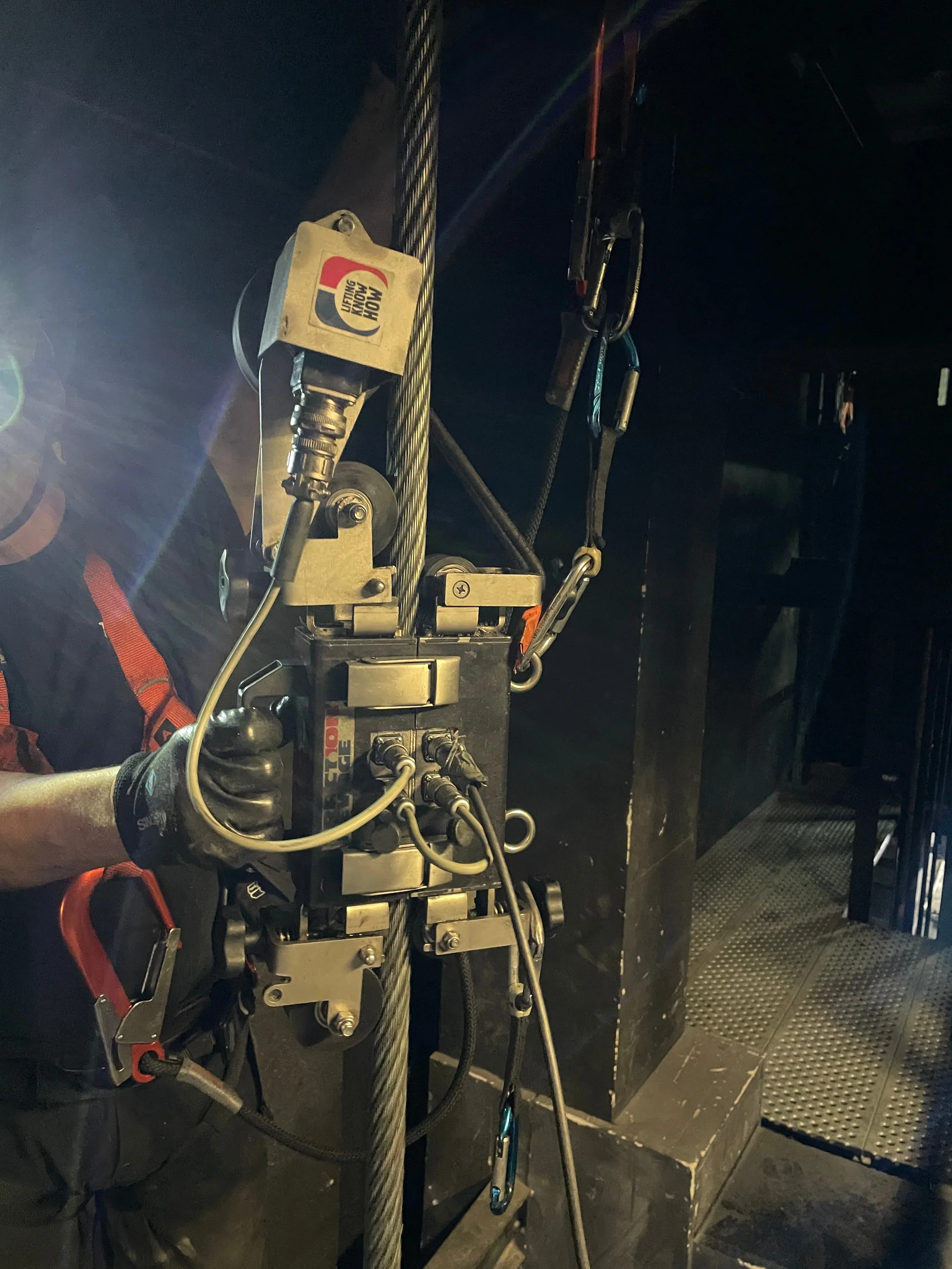Magnetic Rope Testing for cable-stayed structures
The MRT method is adapted to inspect static cables
To approximate observations like "I would say that with binoculars, this wire rope looks pretty good," we respond: "necessary, but not sufficient."
The field of static cables primarily includes installations such as masts, various types of pylons, towers, antennas, chimneys, flare stacks, as well as all types of structures like walkways, bridges, stadium roofs, aviaries, counterweights for lifting installations, art architectures, and many more.
The magneto-inductive technique uses a motorized device to inspect these static cables. Combined with a dedicated team of rope access technicians, our MRT technicians, certified according to ISO 9712 MIT WR Level II, are able to calibrate the devices on-site to optimally utilize LF and LMA signals for inspections conducted day and night. Additionally, these technicians are capable of securing broken wires.
Thanks to our extensive history and workshop tests, we finely qualify detected defects and can propose relevant removal criteria if necessary.
Our implementation procedures for the device combine an appreciable inspection speed and adaptive device settings, allowing us to analyze a 400-meter-long wire rope in just under 20 minutes before moving on to the next wire rope, thus minimizing inspection and downtime.
Our reports, clear and educational, guide their readers through our comprehensive approach, thereby justifying the trust placed in us.
Our approach avoids the preventive removal of wire ropes due to lack of certainty, replacing them only in case of real risk, or extending their lifespan after a favorable MRT inspection.
Other sectors concerned by Magnetic Rope Testing
Click below on one of the icons to learn more about the specifics of Magnetic Rope Testing




